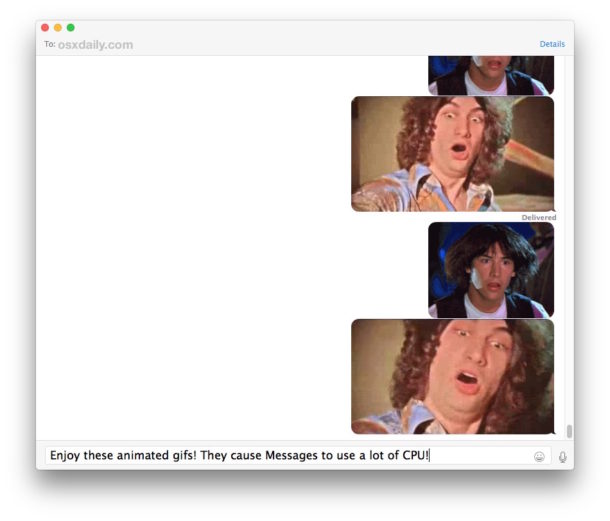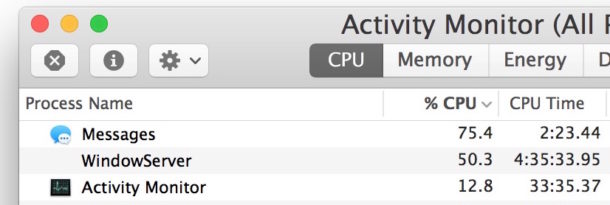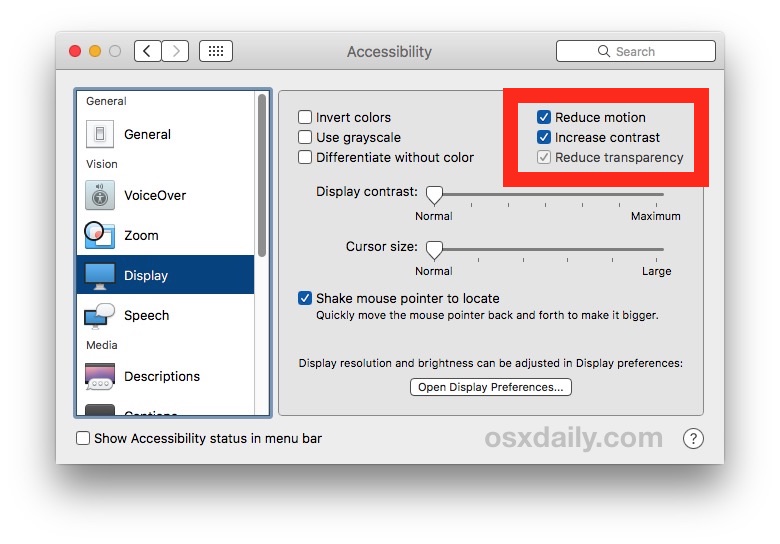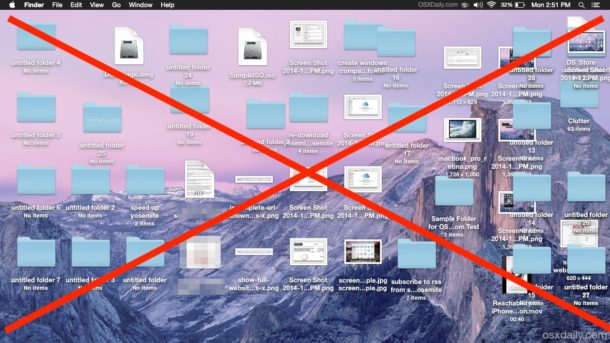![]()

Some Mac users who have updated to macOS Sierra have felt their computer is running slower than it should be. If you have noticed a performance hit after upgrading to macOS Sierra, there is likely a good reason for it, and it’s even more likely to have a simple solution.
Read on to learn why macOS Sierra may be running slow (some MacBook users notice their Mac is hot and fans are blasting away too), and what you can do about it.
1: Slow Mac After Sierra Update? Fans Blazing? WAIT!
Immediately after updating to macOS Sierra, the Mac must re-index the drive for use with Spotlight and Siri, the built-in search functions in Mac OS. This can take quite a while to complete, particularly if you have a large hard drive with a ton of files. It is important to just let this process complete itself, interrupting Spotlight indexing will cause Spotlight to not work properly, and it will just attempt to re-index again anyway.

Another possible cause of a perceived slowdown after updating to macOS Sierra is the new Photos app, which indexes and scans all photos for identifiable features and faces. This can take quite a while as well, particularly if you have a very large Photos app library. This is another process that you need to let complete in order for Photos to work properly.
The solution? Wait it out. I know, waiting isn’t always satisfying, but it’s easy and it works! For the vast majority of users, the reason their Mac feels slow after updating to macOS Sierra is because of the reindexing features that are going on in the background. These tasks can consume a notable amount of CPU cycles as they complete, leading to blazing fans, slow performance, and Mac that feels like it’s running hot, but once the background tasks are finished the Mac will be speedy again. (this can also be the case with iOS 10 sluggishness, by the way).
![]()
Let the Mac sit turned on overnight while it’s not in use, and all indexing processes should be complete by morning with performance returned to normal.
2: Mind Your Messages
Do you use the Mac Messages app? If so, pay attention if you are receiving tons of animated GIFs and stickers, which can arrive in abundance from an iOS 10 iPhone user who is having fun with the new Messages stickers, gifs, effects, and other chaos that can be sent from iOS 10 Messages app.

Receiving animated GIFs in particular can cause a temporary slowdown on the Mac and in the Messages app in particular, if those message windows are open and actively on display and animating as intended.

The good news is that the animated gifs will stop playing and pause automatically once they are off screen in the Messages app, so just send a few messages in response, or clear the chat log, and Messages app will be smooth again and whatever sluggish behavior will remedy itself.
While gifs, effects, and stickers are undoubtedly fun (even though you can’t send the message effects back from a Mac… for now anyway), just have a little awareness about leaving these message windows open on the Mac.
And by the way, for the technically inclined people, you can test this out immediately by opening a new message window and sending or receiving a few animated gifs and leaving that chat window open… in Activity Monitor you will see Messages spike in CPU activity.
3: Use Reduce Transparency & Reduce Motion
Eye candy effects like transparent windows and overlays sure look nice, but they can also lead to performance reduction as each new window requires more system resources to draw and maintain. Additionally, the Mac has many motion type effects within Mission Control and elsewhere that zip and zoom around.
Fortunately macOS Sierra allows you to turn this eye candy off, which can result in a notable performance increase, particularly for power users who have a lot of apps or windows open concurrently.
- Open the Apple menu and go to System Preferences, then choose “Accessibility”
- Go to “Display” settings
- Check the box for “Reduce motion” and “Reduce transparency”
- Exit out of System Preferences

This will have an immediate effect on the appearance of Mac windows, titlebars, sidebars, and other UI elements by using reduced transparency, and you won’t see as many animations throughout Mac OS either with Reduce Motion turned on as well, which is a new option in Sierra. The result can be a speedier Mac.
4: Clean Off a Cluttered Desktop
Many Mac users store tons of files on their desktops, resulting in a very cluttered desktop full of files and folders and other stuff.
Don’t do this. It can slow down performance.

The easiest solution to this is to drag and drop everything from the desktop into a separate folder on the desktop, call it “Clutter” or “Desktop stuff” or whatever you want, and then open and use that folder when you need to access your desktop stuff. Another option is to hide all desktop icons completely using a defaults command, but that is best for advanced users since it involves the Terminal and disabling the Desktop feature.
5: Check Activity Monitor for Background Tasks & Oddities
If a Mac feels sluggish, the simplest way to quickly see if something is actively consuming resources on a Mac is with Activity Monitor.
You can open Activity Monitor from /Applications/Utilities/ then go to the “CPU” tab and sort by “% CPU”, the topmost items will show you what, if anything, is using high amounts of CPU (shown as a percentage of CPU resources).
In this screenshot example, the “mds” and “mds_stores” processes are running and using a notably high level of CPU – these processes, along with “mdworker” are part of the aforementioned Spotlight indexing that will complete itself. Until these are finished running, the Mac may feel a bit slower than usual.

Other than normal system background tasks and apps, it’s possible you’ll find an errant process or unusual task running and taking up a lot of CPU. If this is the case, quit out of the application as usual, or if it’s a background task, you may need to update the parent application to be compatible with Sierra.
Advanced users can force quit the app, or even uninstall and remove the app if it won’t behave at all. Absolutely do not start force quitting random tasks and processes, the Mac has many system tasks that run in the background and if forcibly quit it will certainly mess something up and cause bigger problems.
Consider Alternate Causes of Slowdowns
If you’ve tried all of the above and you’re still experiencing what you consider to be unusual slowdowns or sluggish behavior with macOS Sierra, it’s always possible there is something else going on. Maybe it’s an incompatibility with a specific app, maybe it’s Time Machine stalling out and grinding resources while it prepares for eternity, or maybe you’re experiencing a rare but truly problematic macOS Sierra experience full of kernel errors and other headaches.
You can engage in troubleshooting various Sierra difficulties, or you can always clean install Sierra or even downgrade macOS Sierra and revert back to the prior Mac OS X version if you declare it’s all too much of a hassle.